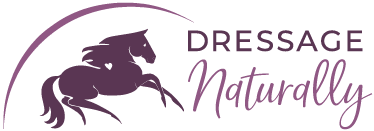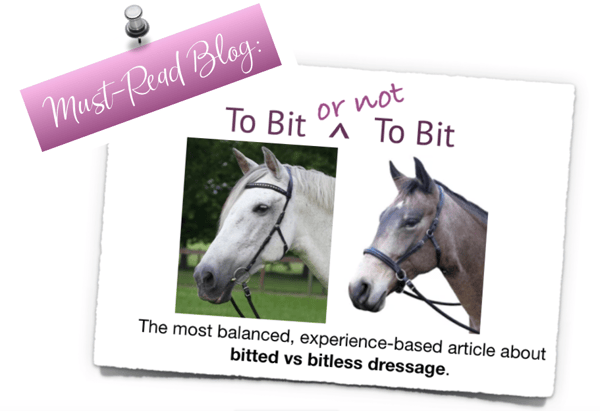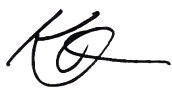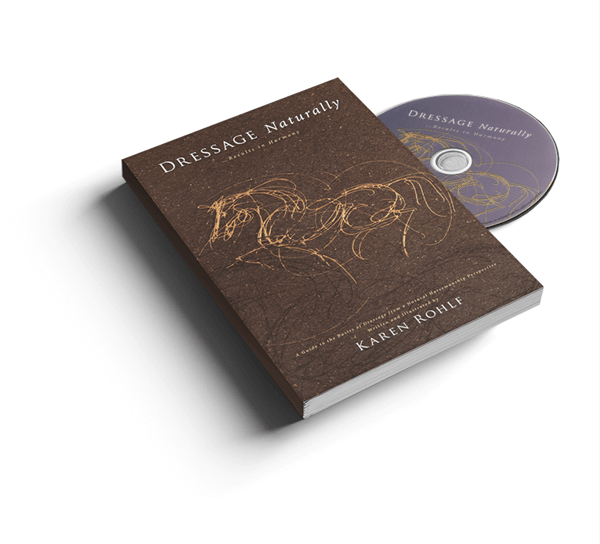Prefer to listen? Check out Karen's Podcast on this subject.
The phrase "get your horse on the bit" has caused much undue pain and suffering for horses and riders. A student shows up for a lesson with their beautiful horse, dreaming of feeling the grace and power they have envisioned. In their first lesson, the instructor says, "Get him on the bit"... And the struggle begins. Why does the bit seem to be the starting point of all dressage? To be seen riding a horse who has 'come off the bit' is a gasp-worthy crime in many dressage barns. Students are led to believe that if they can just get their horse's head and neck in that particular 'round' shape, then they'll be 'doing dressage'.
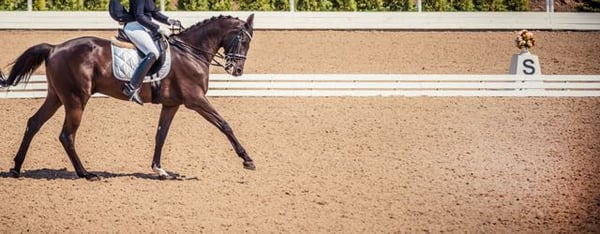
That's not how dressage really works
The trouble is, saying 'get your horse on the bit' single-handedly puts all of the rider's attention on exactly the wrong end of the horse. It causes most riders to activate their hands in a way that will take monstrous amounts of neural reprogramming to stop doing later. It also creates a dynamic in the horse that actively prevents him from achieving better biomechanics.
I know - it's just a term, and when one is properly educated, one realizes that it is a description of an end result where the horse, as a product of his balance, energy, and his trust in his rider's hands, reaches forward, and initiates contact with the bit, thus completing a circuit of energy. The experienced, artful rider says, 'My horse is on the bit' to describe the feeling of their balanced horse reaching forward into their trustworthy contact. Somehow this has turned into 'Get your horse on the bit'.
It's impossible to give and take at the same time. When you tell hands to get something, they will take it. This means the horse will have to give. How can the horse seek to take the contact if he is being asked to give it?
The reality is, 'get your horse on the bit' is a terrible term that causes uneducated students to use their hands in an attempt to take dominant control of the horse's neck/head/jaw so that his neck goes into a 'round' shape. Words matter!
Let The Neck Come Last
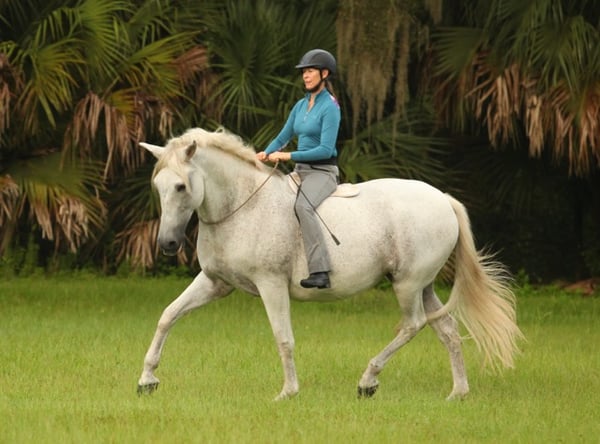
The head/neck is both the most flexible and the most sensitive part of the horse's body. This means that mistakes here can easily cause defensive behaviors and postures (which work against the posture we are looking for). It also means that it's possible to 'disconnect' the neck from the rest of the body: It's possible that a rider can put the neck into a 'round-looking' shape even if the rest of the spine is completely the opposite of that. That's actually not a good thing.

The neck and head are a reflection of the state of the whole horse (body and mind). When you don't over-manipulate the neck it becomes an excellent indicator of how the horse is really going. When he is going in a relaxed, energized, and balanced way with no reason for resistance, the whole body (including the neck) will naturally take on a 'round' shape. This will happen with a bit, without a bit, with a rider or without a rider. As riders, we need to set up this circumstance in our horse's body and mind, then be balanced and trustworthy with educated enough hands to connect with our horse in this place without messing it up! The bottom line is that a horse with a balanced body and mind but a less than perfect shape of neck is easier and more fun to ride than a horse whose neck rounds easily but the rest of his body and mind is a mess.
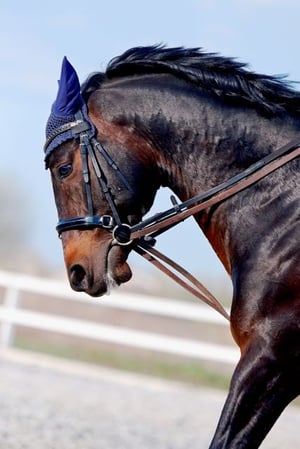 The more the neck is made round when the rest of the body is not, the harder it becomes to get to the rest of the body. The horse has two choices: Defend himself through brace, or learn to avoid by contracting and 'disappearing' away from the contact. Each of these actively disconnects the horse's neck and body which is exactly the opposite of what we are striving for in dressage. It is much more difficult to retrain horses who have learned either of these things, yet many students are taught to go to the neck first.
The more the neck is made round when the rest of the body is not, the harder it becomes to get to the rest of the body. The horse has two choices: Defend himself through brace, or learn to avoid by contracting and 'disappearing' away from the contact. Each of these actively disconnects the horse's neck and body which is exactly the opposite of what we are striving for in dressage. It is much more difficult to retrain horses who have learned either of these things, yet many students are taught to go to the neck first.
It has become such a normal way of thinking and riding that even higher level riders will solve the problem of a braced back by asking the horse to go ever-deeper, ever-rounder, trying desperately to round the neck more and more in hopes that he will somehow 'get on the bit', and the back will then 'pop' up (rollkur, hyperflexion, low deep round). This usually makes horses even more defensive or more evasive, more on the forehand, and tight in their lower backs. This drives the hind legs even further out behind (which unfortunately will make these riders feel like they have to round the neck even more).
A Matter of Priorities
It seems more generally acceptable to err on the side of 'round neck no matter what', than to prioritize the horse being able to carry himself lightly with engagement even if (cue the gasp) his neck comes up and his nose comes forward.
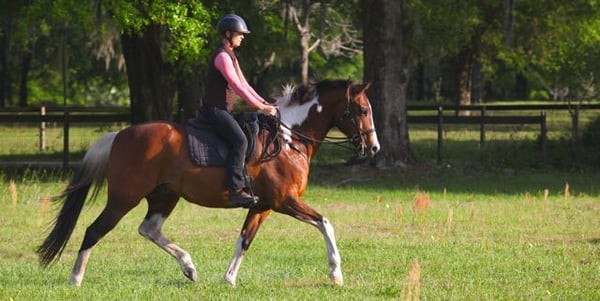
If the horse is in self-carriage, active behind, and straight with a supple body it will feel wonderful to ride. The neck could be up, and even open and the rider will not have a desperate feeling. She could close her eyes and be confident that she and her horse are in a functioning balance and connection... Even if the nose was a bit in front of the vertical, even with the poll at the highest point (oh wait, that's where it's supposed to be).
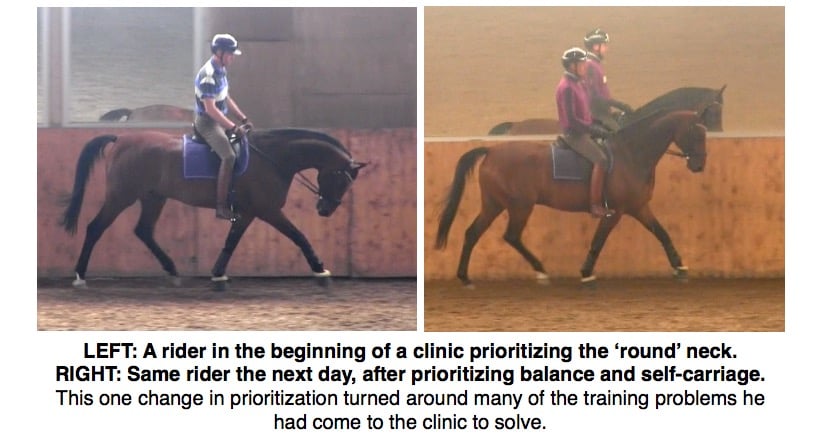
What if, instead of telling students to 'get your horse on the bit' in their first dressage lessons, instructors checked to see if riders could remain balanced and calm without needing the reins; to understand the concept of self-carriage first? What if riders were asked to 'find their horse's back feet'? What if they were asked if their horses were matching their energy or if they felt straight underneath them? What if they were told to not restrict their horse's necks; that the neck was allowed to be a true gauge of the balance of the horse. The shape of the horse is a result of the balance, the balance is a result of the movement, and the movement is a result of the quality of the communication, and the communication is a result of the relationship.
Finding The Working Gaits
In Dressage Naturally, we make sure a horse and rider are able to calmly go, stop, turn, and can regulate their speed, all without needing the reins (what I call being 'comfortable transportation'). This will eliminate many of the reasons riders may interfere too much with the neck or get too dominant with their hands.
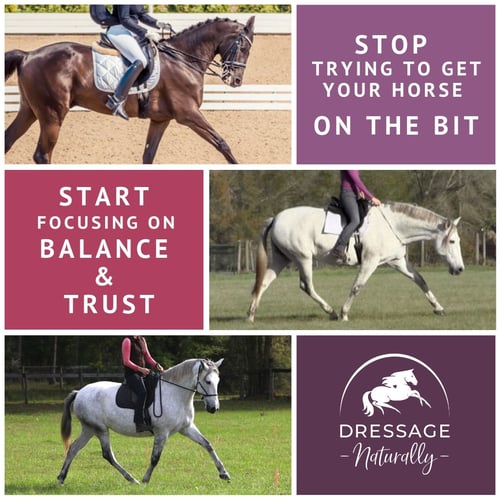
Next, we introduce a conversation about stretchability. I teach riders to experiment in order to find the degree of Relaxation, Energy, and Balance where the horse says he feels so aligned and in harmony with himself that he actively relaxes his top line in motion, creating a stretch. I teach students that when they feel imbalance or contraction they can play with those three conversations to take the horse from contraction to stretch. I teach them this is done by talking to the body and we prove to the horse that he can confidently stretch into the contact and that our hands will follow. The 'roundness' that comes is a result of being in this Sweet Spot of mental, emotional, and physical balance. This skill will come in very handy when doing working and collected gaits in connection with the reins.
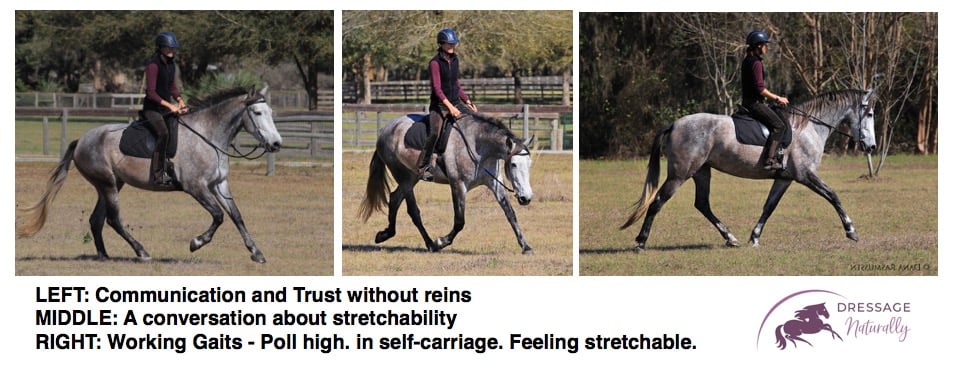
To establish Working Gaits I ask riders to feel for three criteria:
- Poll the highest point
- In self carriage (Navigating through seat connection. Horse and rider are carrying themselves. The contact is being used for connection, not control, and can be released in any moment with no loss of balance)
- Feeling stretchable (The horse's back is still free and 'filling up' the contact. In any moment the rider can suggest and easily find a stretch)
When you can sustain these three criteria at the same time you are likely in your working state. I teach students to test it by doing transitions and movements. Working Gaits are called that because it is a state where stuff works (functions). They aren't called Working Gaits because it is hard work.

It's Time For You & Your Horse To Enjoy The Process
Way too many students are stuck in the lower levels for their whole lives, working hard to 'get their horses on the bit' and they don't even know that they are working against themselves. One day they realize that they have taken a decade of dressage lessons and they still can't turn, or stop, or go with any kind of harmony. They are icing their hands after their rides, have chronic back pain, are frustrated, and think that's a normal part of doing dressage. Their relationship with their horse is nothing like they pictured when they got into horses in the first place. They are being told to tighten the nosebands, put on spurs, and even though it makes them cry a little on the inside, they do it because they want to be 'good' students. They are told to buy deeper-seated saddles with bigger knee rolls to hold themselves in place when their horse pulls. Often they are totally confused because even though it feels terrible for them and their horses, they are being told 'Good!' if they manage to get the horse's head in the 'right place'.
This may sound exaggerated, but it's not. I have met hundreds of students who have experienced this. If this sounds like your experience, please know that there are better ways. Dressage can be a beautiful process. I know there are instructors reading this who are agreeing with me because they have seen this problem and are committed to better ways of teaching.

Karen Rohlf simplifies and explains complex training issues,
and empowers you with the confidence to get results.
So, spread the word: Stop trying to 'get your horse on the bleeping bit'. They'll get there when they are ready. Don't try to make a horse look 'round' if his body doesn't feel like being round. Dressage is about riding a horse who is and feels balanced and in harmony with you. Aim for that, and the posture works itself out much more easily.
